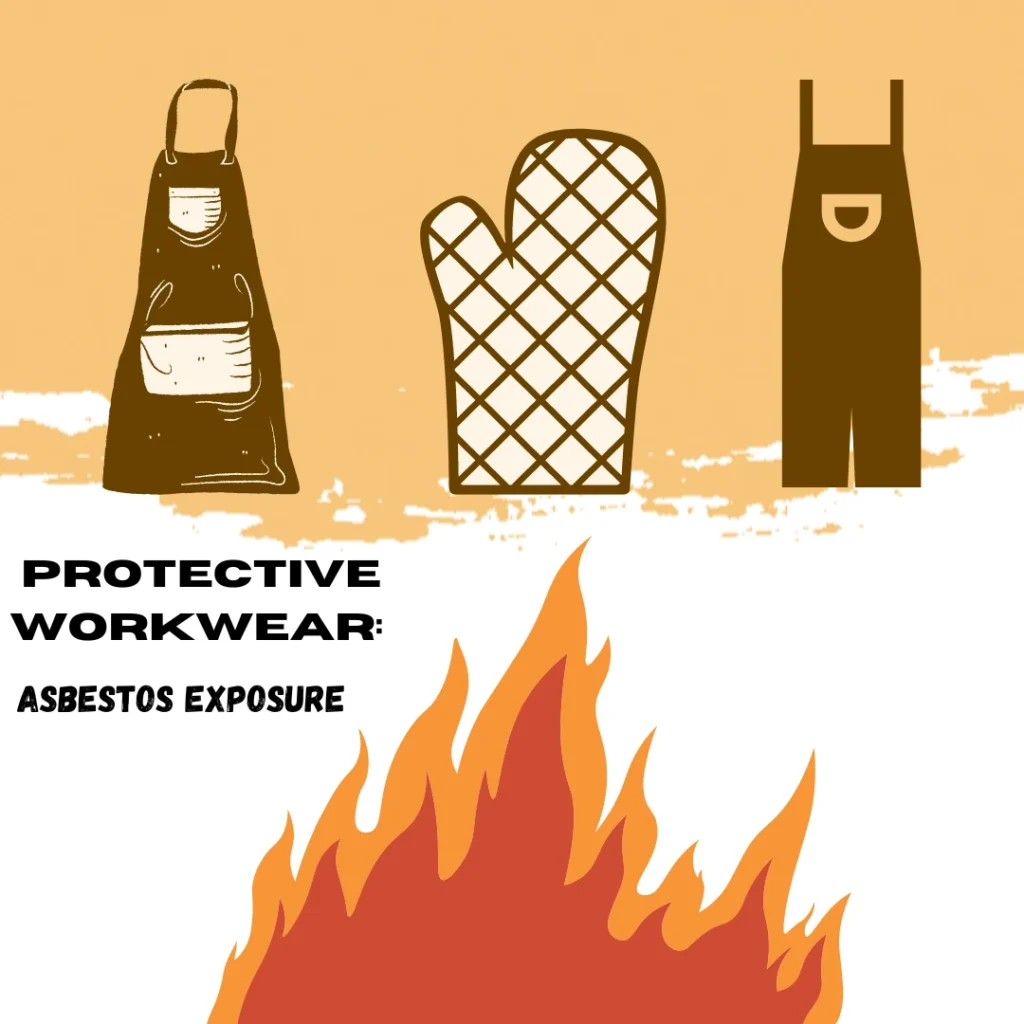Key takeaways: Asbestos was frequently used in protective workwear (like aprons, gloves, oven
mitts, firefighters’ uniforms) because of its superb fireproofing and integrity-promoting qualities.
A study published in 1970–well before strict asbestos regulations were put in place–found that
people that wore asbestos-based clothing were at a high risk for ingesting airborne fibers.
Asbestos exposure is known to be associated with mesothelioma, so these production companies
need to be held accountable for knowingly exposing their consumers to textiles created and
suffused with asbestos.

Why was Asbestos Used in Textiles?
Asbestos was incorporated into products to enhance their durability, resistance to fire, and
structural stability. Because it’s a naturally-occurring set of minerals, asbestos was easy to mine,
process, and use in textiles for occupations that dealt with exposure to fire, heat, and the
elements. Before scientists, policy-makers, and employers understood that asbestos exposure was
associated with mesothelioma, most protective workwear contained asbestos. It was viewed as a
positive: it was a relatively easy and inexpensive way to protect employees from the conditions
they were exposed to at work.
A group of researchers in 1970 published a scholarly article about the dangers of asbestos in
protective workwear, specifically asbestos-reinforced overalls. They collected dust samples from
areas of the body they believed were at risk of exposure (breathing zones), which was near the
head and chest. They found that the presence of long fibers–fibers that are large enough to be
ingested and are known to be associated mesothelioma–was well above the acceptable exposure
level. Importantly, this study was published in 1970, which was long before the 1992
intervention of government agencies to protect employees from asbestos. Even though this
information was available to the general populace before mass interventions, textile and
workwear companies still decided to incorporate asbestos in their products.
Who is at Risk?
The clothing associated with certain occupations–ones that regularly handled fire or extreme
heat–presented the highest risk of asbestos exposure. Steel workers, industrial workers, railroad
employees, mechanics, firefighters, veterans, and others were regularly exposed to asbestos
through their protective equipment. Because these jobs were physical, the mechanics of the
wearer’s movement likely released the asbestos fibers of the workwear into the aforementioned
“breathing zone.” Anyone that used protective equipment before the early 1990s was likely
exposed–at least to some degree–to asbestos in their clothing. The long latency period between
asbestos exposure and mesothelioma onset has delayed the effects of this phenomenon; now,
we’re likely to see the mesothelioma present in these previous employees.
How to Mitigate Exposure
Any workwear that was created before the 1980s should be handled with extreme care. Ideally, if
you own any of these products, do not use them, especially the ways they were intended to be
used–this is known to cause asbestos fibers to become airborne. Today, workwear and textile
production companies use a different fireproofing material to supplement their products, so
modern-day use with these types of textiles doesn’t pose an asbestos exposure risk.
If you or a loved one has been diagnosed with an asbestos-related disease, please call
(800)-505-6000 for legal help. For more information, fill out the form on our Contact Us page.
Sources:
Cherrie, J. W., Tindall, M., & Cowie, H. (2005). Exposure and risks from wearing asbestos mitts.
Particle and Fibre Toxicology, 2(1), 5. https://doi.org/10.1186/1743-8977-2-5
Goswami, E., Craven, V., Dahlstrom, D. L., Alexander, D., & Mowat, F. (2013). Domestic Asbestos
Exposure: A Review of Epidemiologic and Exposure Data. International Journal of
Environmental Research and Public Health, 10(11), Article 11.
https://doi.org/10.3390/ijerph10115629
H. A. Bamber, R. Butterworth. Asbestos hazard from protective clothing. (1970). CABI Databases.
Retrieved February 22, 2024, from
https://www.cabidigitallibrary.org/doi/full/10.5555/19712701936